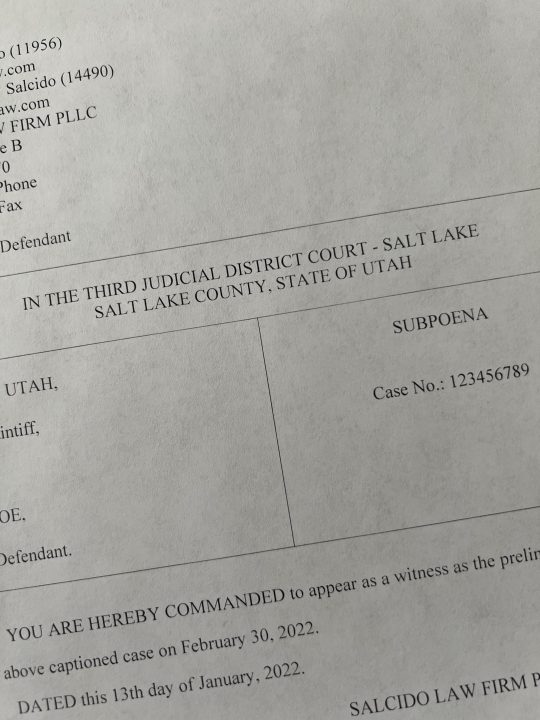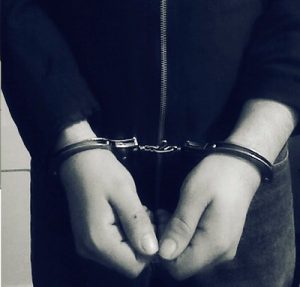A lot of people who are engaged in contentious litigation (like most criminal cases) tend to believe that if they can show that a witness is a really bad guy that the judge will discount the witness’s testimony and the defendant’s case will be dismissed. We often have to disabuse our clients of this notion. Courts are interested in facts relevant to the issue at hand. For example, let’s say that you are being charged with assault in Utah, and the victim (the person you assaulted) has been a real thorn in your side for some reason. Maybe he has a history of disrespecting you or your loved ones. The court is not particularly interested in the victim’s bad habits or bad character traits unless it is directly relevant to the issue of whether you assaulted the victim. There’s no reason to bring up the fact that the victim has not paid his bills for example.
In order to curb the character assassination in court, Utah has adopted rules of evidence, in particular Rule 404 which relates to character evidence. Below the text of the rule is in italics and our brief explanation is next to it in red:
(a) Character Evidence.
(1) Prohibited Uses. Evidence of a person’s character or character trait is not admissible to prove that on a particular occasion the person acted in conformity with the character or trait. Just because someone did something in the past, or has a tendency to act a certain way, doesn’t mean that is what he did or how he acted on the date at issue.
(2) Exceptions for a Defendant or Victim in a Criminal Case. The following exceptions apply in a criminal case:
(A) a defendant may offer evidence of the defendant’s pertinent trait, and if the evidence is admitted, the prosecutor may offer evidence to rebut it; There’s a broad exception for criminal defendants, and for good cause. A person who is being charged with a violent crime, for example, should have the ability to bring forth evidence showing that he has always been a nonviolent peaceful person. It goes to his defense, and therefore, is not as prone to abuse. A prosecutor, however, can bring forth evidence showing that the defendant has a history of violence, if the defendant tries to show that he has a history of being a peaceful person. The jury, after all, should not be allowed to be manipulated with one sided evidence.
(B) subject to the limitations in Rule 412, a defendant may offer evidence of an alleged victim’s pertinent trait, and if the evidence is admitted, the prosecutor may:
(i) offer evidence to rebut it; and
(ii) offer evidence of the defendant’s same trait; and
Rule 412 deals with evidence of a victim’s sexual behavior. In other types of cases, again such as a violent crime, this rule permits a defendant to show that the victim is the one with a history of violence and was the first aggressor and the defendant was simply acting in self defense. A jury should be allowed to consider such evidence because it goes to the victim’s credibility.
(C) in a homicide case, the prosecutor may offer evidence of the alleged victim’s trait of peacefulness to rebut evidence that the victim was the first aggressor.
A homicide case is one which results in a dead body at the hands of another person. In any self-defense case the prosecutor will take advantage of this rule to show that the defendant was an aggressor and the victim was peaceful.
(3) Exceptions for a Witness. Evidence of a witness’s character may be admitted under Rules 607, 608, and 609. These rules deal with the “impeachment” of a witness. Impeachment is the term used to described a lawyer’s “calling out” a witness by showing that the witness is not credible because the witness lied, misrepresented something, or otherwise gave testimony that should not be given much weight.
(b) Crimes, Wrongs, or Other Acts.
(1) Prohibited Uses. Evidence of a crime, wrong, or other act is not admissible to prove a person’s character in order to show that on a particular occasion the person acted in conformity with the character. The law does not assume that just because you stole something two years ago that you must have stolen something on this occasion. This rule, however, really has no teeth because of the subsequent subsection.
(2) Permitted Uses; Notice in a Criminal Case. This evidence may be admissible for another purpose, such as proving motive, opportunity, intent, preparation, plan, knowledge, identity, absence of mistake, or lack of accident. On request by a defendant in a criminal case, the prosecutor must: A clever prosecutor can mold past crimes into one of the foregoing categories and judges are pretty liberal letting them do so.
(A) provide reasonable notice of the general nature of any such evidence that the prosecutor intends to offer at trial; and Reasonable means reasonable. Ultimately whether the notice given was reasonable is in the discretion of the judge.
(B) do so before trial, or during trial if the court excuses lack of pretrial notice on good cause shown. Good cause is also determined by the judge. Prosecutors can get away with giving no notice at all more often than not.
(c) Evidence of Similar Crimes in Child-Molestation Cases.
(1) Permitted Uses. In a criminal case in which a defendant is accused of child molestation, the court may admit evidence that the defendant committed any other acts of child molestation to prove a propensity to commit the crime charged. If there is evidence that a defendant has committed child molestation in the past, that evidence is admissible in a current child molestation case. One can only speculate that this exception is permitted because of the nature of the crime. Generally speaking, those convicted of these crimes are diagnosed to have some psychological problems, and therefore, because it is a thing of the mind, Utah allows evidence of prior instances.
(2) Disclosure. If the prosecution intends to offer this evidence it shall provide reasonable notice in advance of trial, or during trial if the court excuses pretrial notice on good cause shown. See above.
(3) For purposes of this rule “child molestation” means an act committed in relation to a child under the age of 14 which would, if committed in this state, be a sexual offense or an attempt to commit a sexual offense. Basically, if the act was committed on a kid under 14 years old anywhere in the world, it is admissible.
(4) Rule 404(c) does not limit the admissibility of evidence otherwise admissible under Rule 404(a), 404(b), or any other rule of evidence. If you can admit it under subsections (a) or (b) above, then it can be admitted notwithstanding subsection (c).




